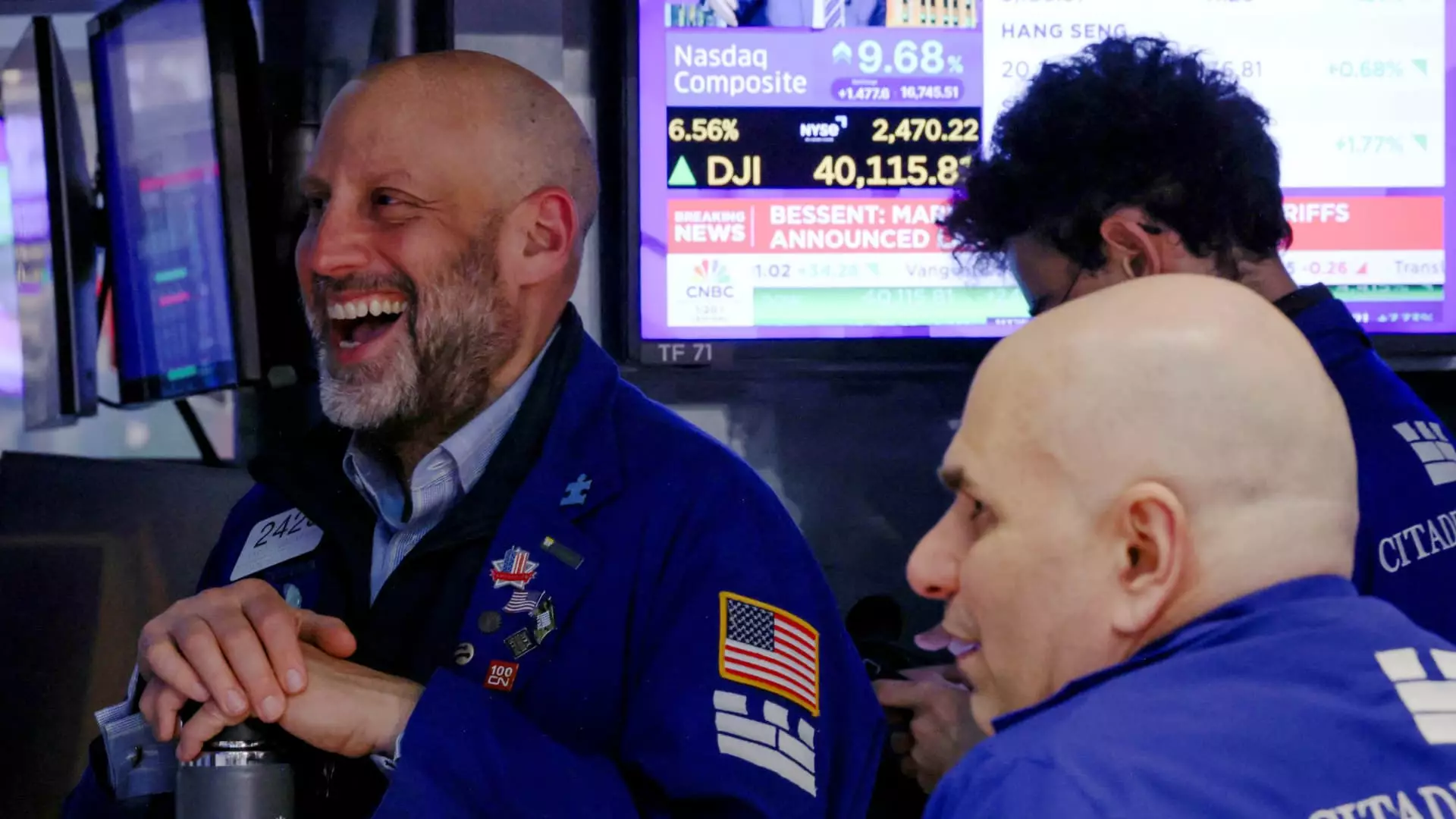In an electrifying twist, stocks experienced a remarkable surge on Wednesday, propelled by President Donald Trump’s unexpected announcement of a 90-day pause on some reciprocal tariffs. This surge holds particular significance given the recent weeks filled with unease and relentless pressure on the markets. The Dow Jones Industrial Average boasted a remarkable 3,028-point jump—an 8% rise reminiscent of market rebounds not seen since 2020. Meanwhile, the Nasdaq saw an astonishing 12.4% spike, marking its largest single-day increase since the aftermath of 9/11.
Such dramatic fluctuations evoke deep-seated feelings of uncertainty and hope among investors. The stock market, inherently volatile, is often reflective of broader economic health, and the dizzying highs and lows from this week reveal not only the fragility of the current system but also the palpable anxiety investors wrestle with—immediately buoyed by hope, but with long-term concerns lingering just beneath the surface.
A Mixed Bag of Consequences
While these numbers may seem encouraging at first glance, it’s essential to adopt a more scrutinizing lens. The President’s announcement, while initially perceived as a form of relief, comes cloaked in ambiguity. In a post on Truth Social, Trump stated, “I have authorized a 90 day PAUSE,” along with a lowered reciprocal tariff of 10%. However, in this very same breath, he unveiled the complicated reality: a substantial increase in tariffs against China to a staggering 125%.
Moreover, this pause contradicts the narrative that tariffs are vanishing, a claim that has been repeatedly touted without substantial support. Treasury Secretary Scott Bessent later clarified that this temporary relief applies only to countries outside of China, indicating how intertwined our economy has become with a challenging international relationship. It’s a double-edged sword—what appears as a benevolent gesture also signals an impending storm, raising questions about the path forward once this fleeting pause concludes. Will we find ourselves back in the throes of market chaos? The uncertainty looms like a cloud overhead, casting doubt on the sustainability of this bullish return.
Investors: Cautious Optimism or Recklessness?
The financial markets are reacting, perhaps too impulsively, to the prospect of temporary reprieve. Stocks from companies hit hardest by tariff tensions—such as Apple and Nvidia—saw increases greater than 11% and 13% respectively, with Tesla pricing reflecting nearly a 19% uptick. It’s difficult not to witness this immediate rebound as a classic case of irrational exuberance. Reflecting on Adam Crisafulli’s insights, the rapid recovery could be interpreted as the market elevating itself based more on sentiment than concrete policy change.
Investors find themselves on a precarious precipice. To plunge into the markets with a renewed fervor may be tempting, but it’s worth remembering that fear and enthusiasm are often poor guides. Sam Stovall, the chief investment strategist at CFRA Research, articulated this sentiment aptly: while the recent rally may set the stage for a temporary rebound, it does not guarantee that a fundamental shift has occurred.
The Shadows of Trade Wars and Economic Instability
Before the stunning spike in stock prices, the markets were embroiled in a tumultuous dive fueled by fears of trade wars and escalating diplomatic tensions. The previous days had seen losses so severe—over 4,500 points for the Dow and an eye-watering 12% drop in the S&P 500—that they harkened back to the tumult experienced during the pandemic. This relentless decline fed into psychological anxiety among traders, and the sudden rise denotes a stark contrast to the backdrop of uproar.
The threat of escalating tariffs and retaliatory measures from other countries complicates the economic landscape considerably. With the EU poised to implement its own set of tariffs scheduled to commence on April 15, one might question whether we are genuinely witnessing a market recovery or merely papering over profound issues that remain unresolved.
Only time will tell if this momentary jump is a prelude to stability or a harbinger of greater discontent looming on the horizon. There’s a crucial lesson to embrace amid the electricity of market swings—the assertion that our financial well-being should not depend on erratic government policy but instead on coherent, evidence-based fiscal strategies that can stand the test of time. In these tumultuous times, clear-headedness often becomes a rare commodity.


Leave a Reply